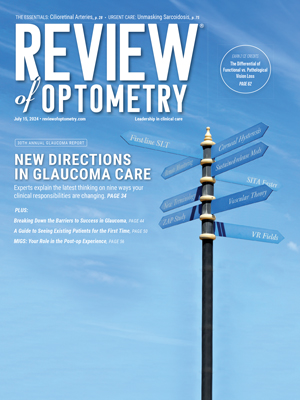If youre like me, youve intended to reduce the paper piles in your office and eventually go paperless. Only thing is well, you havent done it. I can relate. I can also say with confidence that you can make real progressbecause we have. In about three years time we converted to a 90% paperless system, and we can achieve the remaining 10% with only a small investment of time and money.
I cant say the entire transition was easy or inexpensive. Quite the contrary; at one point I considered it a nightmare. However, the efficiency weve achieved was well worth the effort. Consider:
Scheduling is instantly accessible (more than one person can make appointments at any given time), accurate and easy to decipher.
Our clinical records are up-to-date and legible, as we can download all testing data directly into our electronic charts.
Procedure codes and supporting documentation are entered automatically, greatly improving the accuracy of insurance claims.
Optical orders and purchases are accurate and easy to track. Frame and lens inventories are linked, with a running tally on what we have and what we should order.
Our front-desk employees check out each patient with ease because fees, insurance and even co-pays are calculated as the patient moves through our office.
Recalls are built right into the patient profile, and are activated by the system.
The First Step
Youll start the process toward a paperless office from right where you are, computer-wise. Although this sounds obvious, its very important to assess the capabilities of your current hardware and software. To go paperless, you will need a seamless, integrated software package and enough hardware to make the system accessible throughout the office.
We installed our current system about three years ago. We selected the most advanced system at the time. We needed a monitor for each exam room, pre-test area, each optical dispensing station, the reception desk and back office.
Its very important to choose a system with expandability, as you most likely will integrate your practice in stages. You might consider purchasing by system modules, but ask yourself, Will I we be nickeled and dimed as we add modules? Its often cheaper to buy the system in one shot, but you must be ready for big change.
Making the Switch
Once you have a system with the capabilities and speed you need, you might first start small with a few basic tasks, such as scheduling and recalls.
When the front office is comfortable with these tasks, you can get the back office involved with electronic billing. This might have a steep learning curve. For instance, when we filed co-management claims for surgery, we were beating the surgeons bill to Medicare. Our claim would be denied. Now we submit those as paper claims to give the surgeons office time to file their claim first. As this illustrates, our system required some tweaking along the way, but now runs well. I would say we do more than 95% of our billing electronically.
Once you have electronic billing under control, begin to enter testing data and procedure codes. Store insurance information in the patient profile for claims submission. Your last step is to integrate optical information, so at the end of the patient visit, the bill is created electronically, the system alerts reception about the co-pay and prints a hard copy for the patient.
Where We Are Now
Our employees now use the scheduling software when patients call. This is a big asset. The employee gathers insurance information and fills out the patient profile form. When the patient arrives, we print the welcome to our office form, and ask the patient to review it and make corrections. When the patient gives it back to the receptionist, she inputs any changes and discards the paper.
During patient testing, our scribes input all clinical findings into the software (though I could input this myself). Clinical records are the biggest paper generator, and its all paperless for us now. After each exam, we print a one-page summary of the exam and place it in a paper medical chart. We dont have to do this, but we do to ease employees concerns about the system going down (it almost never happens).
We have a few other paper tasks:
We always print a schedule for the following day.
We place all referral forms in the paper medical chart.
Additional tests, such as visual fields, fundus photos, or HRT retinal scans, can be stored digitally, but we print them and place them in a manila folder.
When explanations of benefits, or EOBs, come from Medicare, we keep a hard copy in the paper chart. (By law, you must keep for them for seven years.)
Where Were Headed
We can store results of our ancillary tests electronically. We also could scan those referral forms and EOBs into the electronic record. However, we have not made that leap yet. We will need a more sophisticated scanner to become 100% paperless.
As I mentioned, weve already achieved tremendous efficiency on a daily basis. There used to be so much duplication, and every step had to be written more than once. The staff spent a lot of time looking for charts, and putting them back.
Another benefit I hadnt expected was the capability to extend this to my personal life. I can integrate the new system with my personal digital assistant. I now have telephone numbers, e-mail, and scheduling information integrated and updated all the time, no matter where I am. Its a good thing. n
Dr. Cole practices in Bridgeton, N.J.

